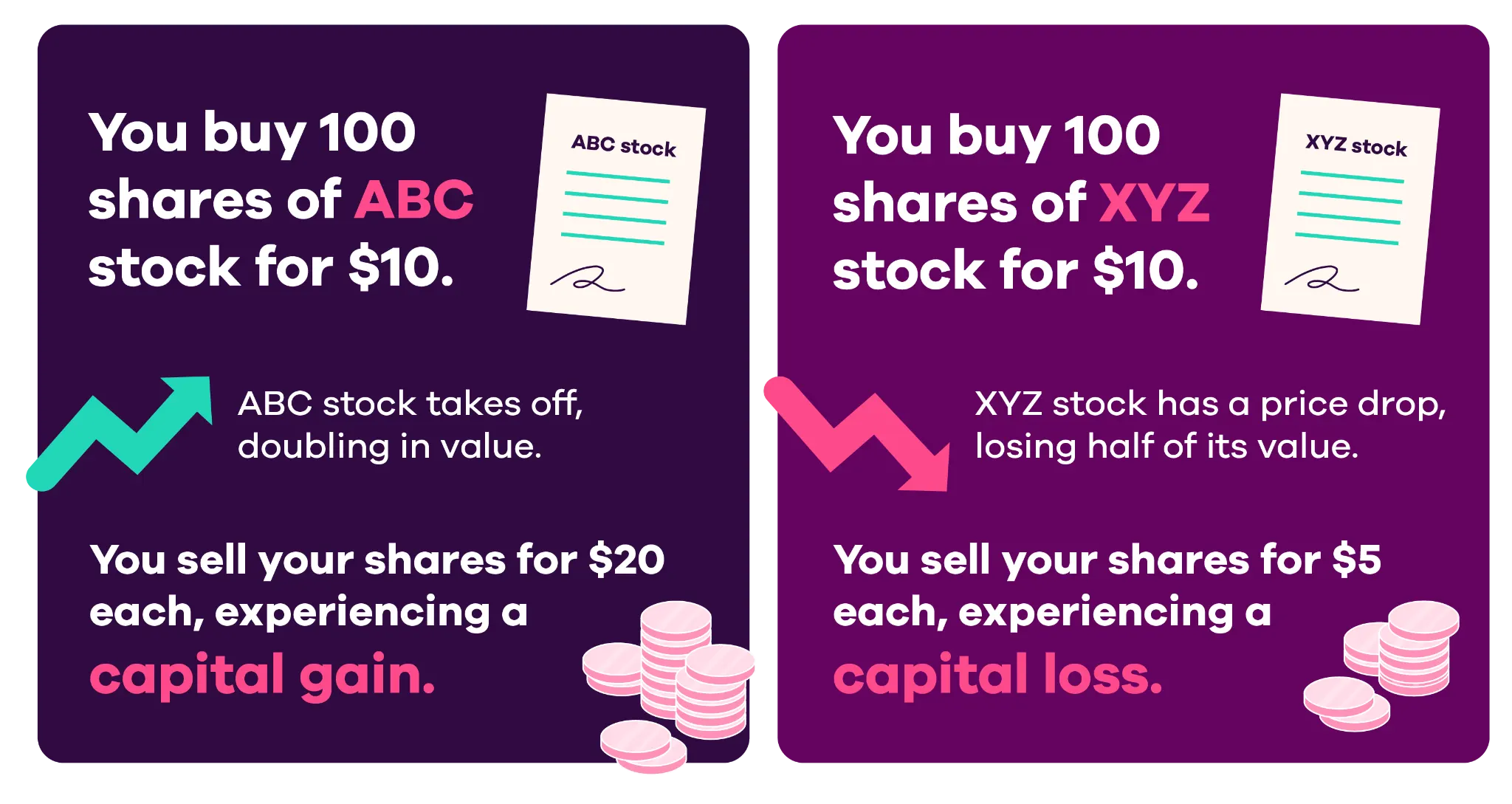What we'll cover
How tax-loss harvesting can lower certain tax liabilities
How tax-loss harvesting can be a tax-saving opportunity
When you should take advantage of tax-loss harvesting
Two financial realities you probably don’t look forward to: paying taxes and losing money on an investment. While we can’t completely eliminate the latter, you can take proactive steps to lower your tax burden when you lose money on an investment. Here’s what you need to know to turn investment losses into tax breaks.
What is tax-loss harvesting?
In simple terms, it’s a way to manage your investment taxesby selling some of your investments at a loss (aka a capital loss) to reduce your capital gains (or the profit you made by selling a security for more than you purchased it for). With this strategy, you can balance gains in your portfolio with losses.
Tax-loss harvesting can be used to reduce your tax liability from:
Short-term capital gains: When you sell a security you’ve held for less than one year. Short term capital gains are taxed at your ordinary income tax rate.
Long-term capital gains: When you sell a security that you’ve owned for more than a year. The long-term capital gains tax rate is 0%, 15% or 20%, depending on your adjusted gross income and filing status.
By selling some of your losing investments and replacing them with similar — but not identical — ones, you can keep more of your money in the market and simultaneously reduce your tax bill.
The benefits of tax-loss harvesting
The higher your tax bracket, the more you could potentially save through tax-loss harvesting. If you’re in a lower tax bracket, you could still tax-loss harvest but it might not yield as much tax savings. Tax-loss harvesting can also be used to offset or future gains, making it useful even if you don’t currently have any gains.
By selling some of your losing investments and replacing them with similar — but not identical — ones, you can keep more of your money in the market and simultaneously reduce your tax bill.
How does tax-loss harvesting work?
A tax-loss harvesting strategy is simple in theory. First, it requires you to have money invested in a taxable investment account. (Tax loss harvesting rules don't apply to a traditional IRA or Roth IRA, since you're already getting tax benefits with those accounts.)
Now, assume you buy 100 shares of ABC stock and 100 shares of XYZ stock at $10 each. The ABC stock takes off, doubling in value and setting you up to realize a capital gain when you sell those shares. But the XYZ stock experiences a price drop and its value is cut in half. So you sell and experience a capital loss.
Not all exceptions for early distribution are based on emergency situations. Other circumstances like home buying or funding education may qualify for penalty-free withdrawals as well.

Your capital loss offsets your capital gain, reducing what you owe in taxes on the portion of your portfolio that was profitable. You can think of tax-loss harvesting as rebalancing your portfolio to realize tax savings.
Who does tax-loss harvesting?
You can tax-loss harvest yourself in a taxable brokerage account, like our Self-Directed Trading account. All you’d do is review your portfolio at year's end and pick out the profitable securities. Then, you would identify underperforming investments that have lost value and sell them.
Some robo-advisors also offer tax-loss harvesting and portfolio rebalancing. The benefit of using a robo-advisor to invest is that tax-loss harvesting and rebalancing can be automatic, so there's no heavy lifting for you — a plus if you lean more towards a hands-off investing strategy.
Tax-loss harvesting limits
The beauty of tax-loss harvesting is that you may be able to use capital losses to offset all your capital gains. Even better, if your capital losses are more than your gains, you get a bonus tax benefit. In this scenario, you can use any remaining losses to offset up to $3,000 of ordinary taxable income for the year. This is the maximum capital loss deduction you can claim, depending on filing status, as of 2023.
Should you have additional losses after meeting the threshold, you can carry them forward to offset future income. So, in a sense, tax-loss harvesting can be a gift that keeps on giving year after year.
Short-term vs. long-term tax rates
It’s also important to consider how a capital gain and a capital loss can be used together. A long-term capital loss is applied to long- erm capital gains first, then short-term capital gains. Likewise, short-term capital losses are applied to short-term capital gains first.
If you hold an asset for more than one year before you dispose ofit, your capital gain or loss is usually long-term. If you hold it for one year or less, your capital gain or loss is short-term. You count from the day after you acquired the asset up to and including the day you disposed of the asset to calculate how long you’ve had it.
Tax-loss rules to be aware of
Remember these important rules surrounding tax-harvesting.
Wash-sale rule
This rule means you can’t sell a security to realize a capital loss, then replace it within a 61-day window, either 30 days before or after the sale with the same (or a significantly similar) security. If you violate the wash sale rule, you forfeit any tax benefits you may have realized from harvesting losses.
Cost-basis calculations
Cost basis is the amount of your capital investment in property for tax purposes. As a taxpayer, you must report your cost basis information accurately to the IRS by filling out Form 8949.
Is tax-loss harvesting worth it?
The value of tax-loss harvesting depends largely on your tax bracket as well as how a capital gain and loss can be used together. Carefully consider these factors together with the wash- ale rule and cost-basis calculations when deciding if tax-loss harvesting makes sense for you.
Benefit from tax-loss harvesting as you grow wealth
By offsetting the amount of taxes, you owe from capital gains, tax-loss harvesting might be a way to turn lemons into lemonade. If a security in your portfolio experiences a loss of value, tax-loss harvesting may be a smart move that may net you a lower tax bill.


